When you have at least one spawn jar with healthy mycelium you are lucky!
Because you can easily multiply this one jar and turn it into 3-5 or even 7 similar jars of grain mycelium. Very roughly it can be compared to budding or propagation by offshoots in plants.
Let us consider one of the effective methods of inoculation and reproduction of mycelium - Grain to Grain transfer (G2G).
❇️ The method is suitable for all mushroom species that use grain as a primary substrate for spawn: either it's magic mushrooms or Hericium (aka Lion's Mane).
Advantages of Grain to Grain transfer
✅ Easy method. The grain-to-grain (G2G) transfer is so simple that any beginner in mushroom growing can handle it.
✅ High speed of grain colonization. After inoculation of sterile grain with this method, the mycelium grows much faster in comparison with liquid spore inoculation.
✅ Simple. This method is also good for those who are not yet ready to embark on the more labor-intensive procedure of preparing a liquid culture. And the G2G transfer is as fast as liquid mycelium inoculation in terms of colonization rate.
✅ Increases the chances of successful colonization. Very often newbie growers find that they have used up all the spore print and all liquid spore suspension for 10-20 jars at once, and end up with only one or two successful ones.
✅ This method is also popular and successfully used by advanced growers. This method save your time and minimum manipulations required from your side.
✅ In fact, this is an endless method of mycelial propagation. You can repeat such transfers on fresh sterile grain again and again.
How to make grain to grain transfer
1. Prepare jars with fresh sterile grain substrate: wheat, oats, barley, brown rice, rye, popcorn, corn, millet, sorghum, bird seeds etc.
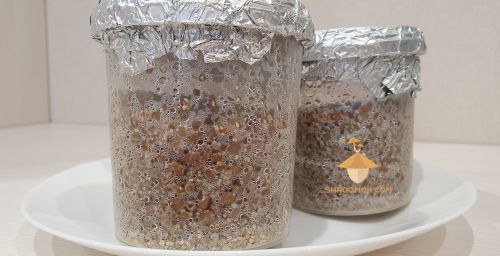
Fill jars with grain no more than 50-60%, so that there is some volume for grain spawn, which will be added to the top of the jars.
How to prepare substrate for grain spawn check in: Choose and prepare substrate, Cooking Grain Substrate and Substrate sterilization
2. Remember about sterility! Use gloves, face mask, cap, gown/PE raincoat before performing the following procedures.
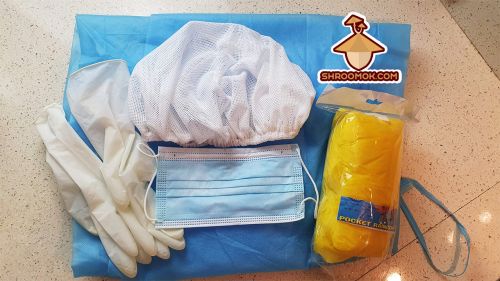
3. Choose a spawn jar with healthy snow-white mycelium. Check it for mold, sourness, and metabolites. Only healthy, perfect mycelium is suitable for this inoculation method. Wipe the spawn jar with ethyl alcohol (70%).
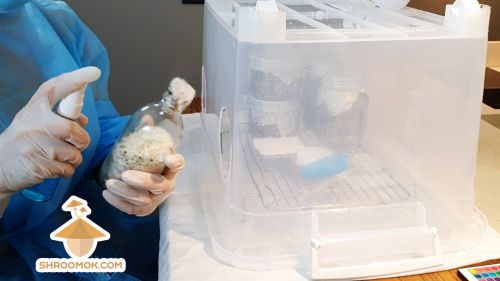
4. Shake and break grain spawn in a jar without opening. Take the jar and methodically tap it on all the sides with the palm of your hand and rub it well. You need to get the clump of grain mycelium to break into independent grains or smaller clumps.
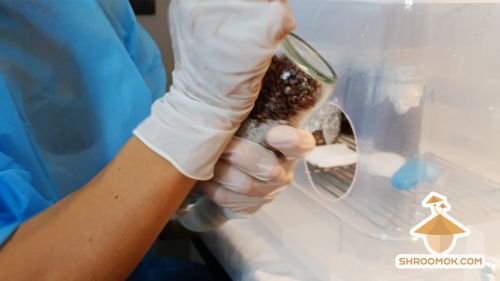
5. Clean and wipe the table with alcohol before G2G transfer.
If you have a quartz lamp in your arsenal use it to disinfect your room 30 minutes in advance.
Great to use a SAB (still air box), glovebox or laminar flow hood.
If you don't have such devices you can make G2G transfer in as clean room as possible on an alcohol-treated table or over the open lid of heated oven under a hot air stream.
Shroomok's experience: manipulation in open air (without SAB etc) infects 1-2 jars out of 10 with mold contamination.
6. Thoroughly wipe down jars (with fresh sterile grain substrate) with alcohol. Pay special attention to the place where the lid connect with the jar.
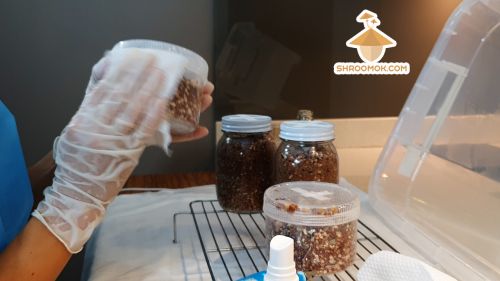
7. Open spawn jar with mycelium and one of your uncolonized fresh jars. Inoculate some of the grain mycelium into the sterile grain substrate. Close the inoculated jar with a lid with air filter lid and set it aside. No need to make inoculation port for such jars, only breathing filter for gas exchange.
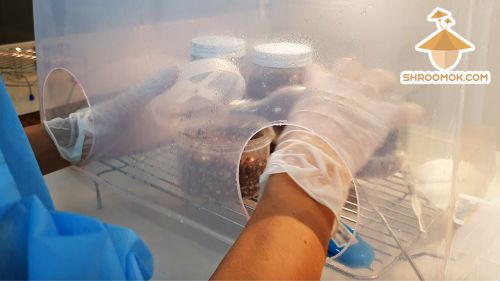
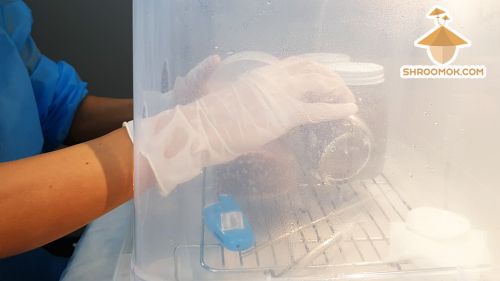
Repeat all these manipulations with every single jar you've prepared for G2G. Try to do it as quickly as possible and don't hang over an open jar for too long!
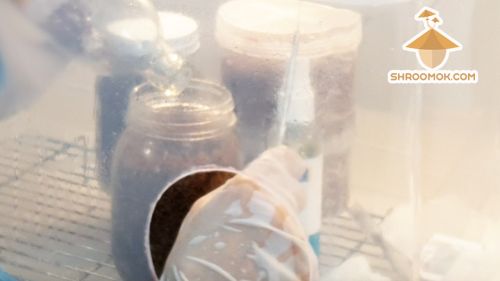
❗️Share spawn between 3-5-7 similar jars. Mycelium of one jar can be shared with maximum 10 jars of the same volume.
❗️ The more grain spawn were transferred into each jar the higher chances of quick and successful colonization.
🔴 If the Grain Spawn is very dense and you could not break it in the jar you can use sterile spoon or inoculation needle. Don't forget to treat your tools with alcohol to avoid contamination by non-sterile tools.
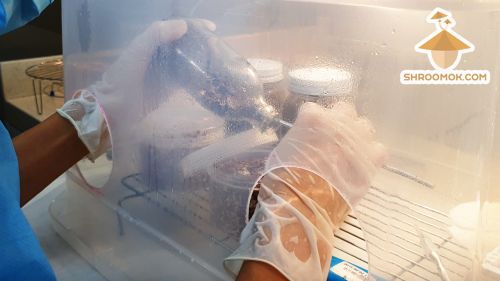
8. When you've finished G2G transfer shake the jars thoroughly to spread the grain with mycelium evenly. The more evenly it spreads the faster each jar will reach 100% colonization.
9. Put the jars in a dark, dry and warm place (+27°...+29° C) for colonization — to the incubator. After 1-2 weeks (depending on the species of mushrooms) all jars will be fully colonized.

What is the best choice of grain for G2G transfer?
❇️ Smaller grains (e.g. millet) colonise the grain substrate faster after grain-to-grain transfer because of the greater number of mycelial development points.
❇️ Spawn on small grains is preferable and effective for grain-to-grain inoculation. Thus, one jar of colonized millet can effectively inoculate 5-7 jars of grain. Whereas one jar of corn can be shared between no more than 3-4 jars.
❇️ Purified grain without husks (even if successfully colonized with mycelium) is not the best option for G2G inoculation. Only whole grain can be used for G2G transfer.
How long mushroom spawn can be stored?
Fully colonised grain spawn can be stored in the refrigerator for up to 2-4 months. Temperature shouldn't be lower than +2°C or 36°F (optimal temperature +5°..+8°C or 41-46°F).
Storing mushroom spawn gives grower more opportunities to plan cultivation process.
🔴 Recommended: How to store Mushroom Spawn for a long time and postpone Spawn to Bulk
Support Shroomok
If you find my work, articles, advices I've sharing helpful you can support Shroomok in the following way.
🍄 Buy Shroomok a mushroom as a donation and say something nice!
Join Shroomok community, ask questions and share your best practices in Discord and Reddit
Have a happy growing!
Peace, Shroomok 🤍


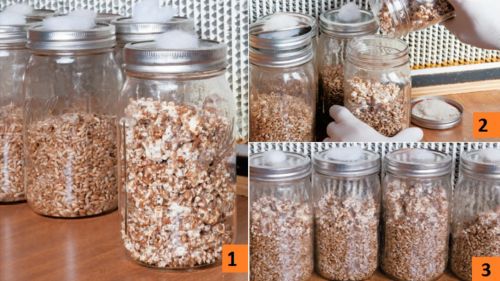
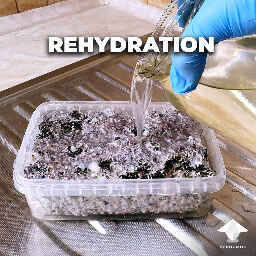
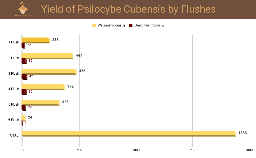
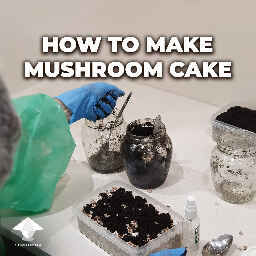
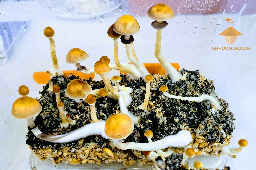
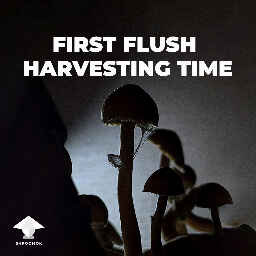
Comments
Add comment